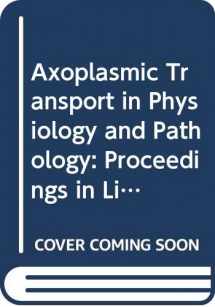
Axoplasmic Transport in Physiology and Pathology: Proceedings in Life Sciences
ISBN-13:
9780387116631
ISBN-10:
038711663X
Author:
Dieter G. Weiss, A. Gorio
Publication date:
1982
Publisher:
Springer Verlag
Format:
Hardcover
192 pages
FREE US shipping
Book details
ISBN-13:
9780387116631
ISBN-10:
038711663X
Author:
Dieter G. Weiss, A. Gorio
Publication date:
1982
Publisher:
Springer Verlag
Format:
Hardcover
192 pages
Summary
Axoplasmic Transport in Physiology and Pathology: Proceedings in Life Sciences (ISBN-13: 9780387116631 and ISBN-10: 038711663X), written by authors
Dieter G. Weiss, A. Gorio, was published by Springer Verlag in 1982.
With an overall rating of 4.1 stars, it's a notable title among other
books. You can easily purchase or rent Axoplasmic Transport in Physiology and Pathology: Proceedings in Life Sciences (Hardcover) from BooksRun,
along with many other new and used
books
and textbooks.
And, if you're looking to sell your copy, our current buyback offer is $0.3.
Description
Cajal and contemporary scientists have laid the basis of the modem concepts of the organization of the nervous system: the cir cuits of the brain are made up of individual neurons which transfer information via specialized structures called synapses. Soma and den drites usually receive the inputs, then the signal is carried all along the axon to the target areas. To fulfIll this task several types of neurons have developed their unique geometry characterized by a large recep tive area (soma and dendrites) and an often very extensive distal branching with the axon terminals. The volume of cytoplasm which constitutes the neuronal periphery is often far larger than the cell body, where the synthetic machinery is located. It is one of the roles ofaxoplasmic transport to supply the periphery with proper material and to sustain the specialized structures necessary for the physiological activity of the neuron. Furthermore, it has become more and more clear that target areas also exert effects on the innervating neurons, and these effects are not only mediated via recurrent fibers. Synapses have been shown to be able to pick up material from the synaptic left which is then intra axon ally transported back to the cell body. This retrograde axoplasmic transport has therefore been recognized as another basic mechanism to convey signals from the periphery to the centre.


We would LOVE it if you could help us and other readers by reviewing the book
Book review

Congratulations! We have received your book review.
{user}
{createdAt}
by {truncated_author}


